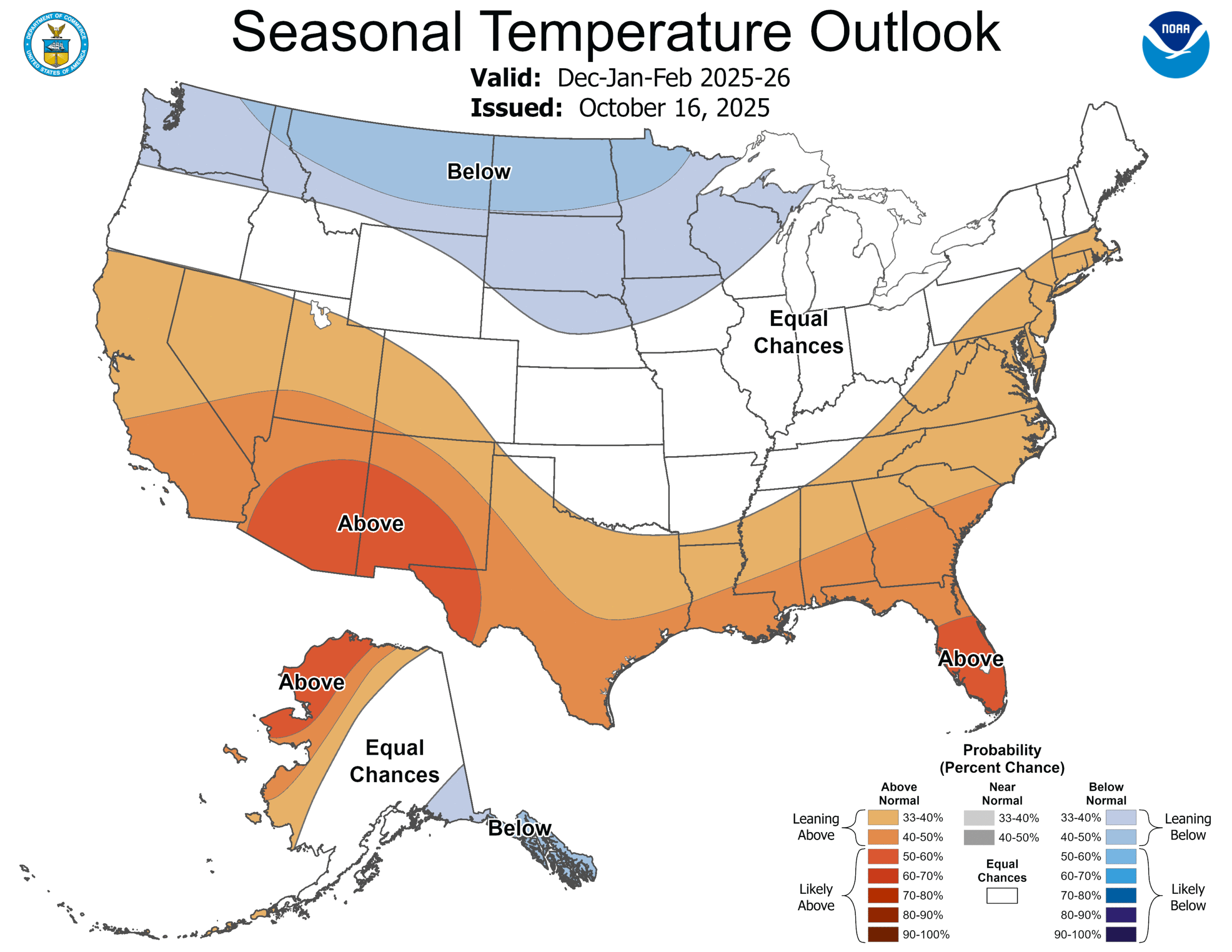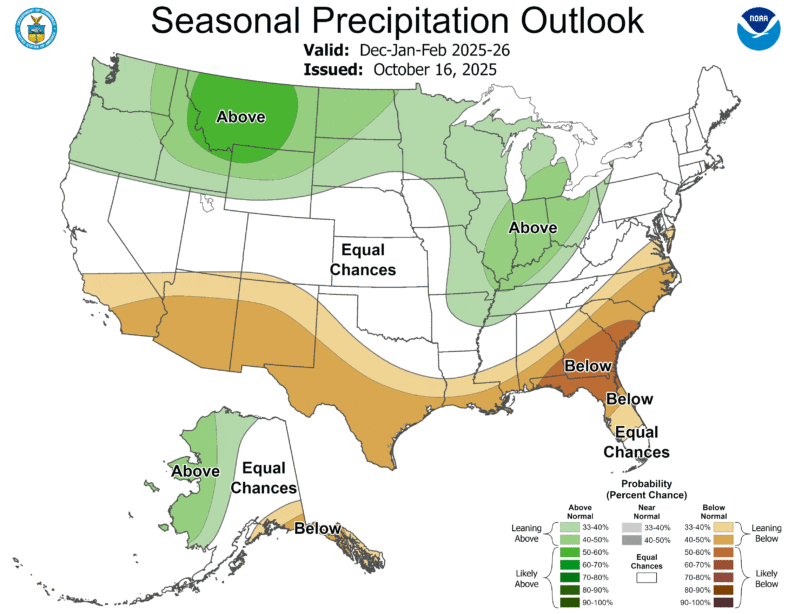
The much-anticipated winter outlook for December 2025 through February 2026 from National Oceanic and Atmospheric Administration (NOAA) and its Climate Prediction Center signals a season of above-average temperatures for many parts of the Mid-Atlantic, including the Eastern Shore, while precipitation and snowfall outcomes remain less certain.
According to NOAA’s extended outlook, there is a strong chance that a weak La Niña event will be in place this winter, influencing storm tracks and large-scale weather patterns. As a result, for the Mid-Atlantic region, the forecast points to equal or modestly elevated odds of above-normal temperatures, while chances of colder than normal winter are reduced.

For the Eastern Shore specifically, the implications are:
Milder temperatures: Residents should expect fewer prolonged cold spells and a reduced likelihood of heavy, persistent snow cover compared to a typical winter.
Precipitation outlook remains mixed: The forecast indicates the Eastern Shore is “leaning below” a less than normal precipitation winter.
Coastal and marine risks unchanged: Despite milder overall conditions, the Eastern Shore remains vulnerable to coastal storms, tidal flooding and nor’easter-type systems. Warm air does not eliminate storm potential, especially in vulnerable low-lying coastal settings.
- Uncertainty remains high: Because the predicted La Niña is weak, and the transition between different climate modes is ongoing, local variation in winter weather could be considerable. Shadows of cold outbreaks are still possible.
Local officials and residents are being urged to prepare as they would any winter: maintain readiness for coastal storms, monitor forecasts for high winds or surf, ensure flood-prone areas are secured, and keep heating and snow-removal plans in place—even if the season trends warmer.
As winter approaches, NOAA will refine its outlook with updated seasonal maps and confidence levels. For the most current guidance for the Eastern Shore, stay tuned to NOAA’s Climate Prediction Center and the National Weather Service’s regional offices.
NOAA predicted a milder winter last year, and the Eastern Shore saw several cold snaps and snow falls. It is important to always remain prepared for whatever Mother Nature throws our way.













